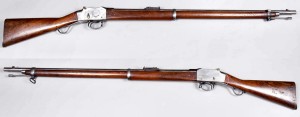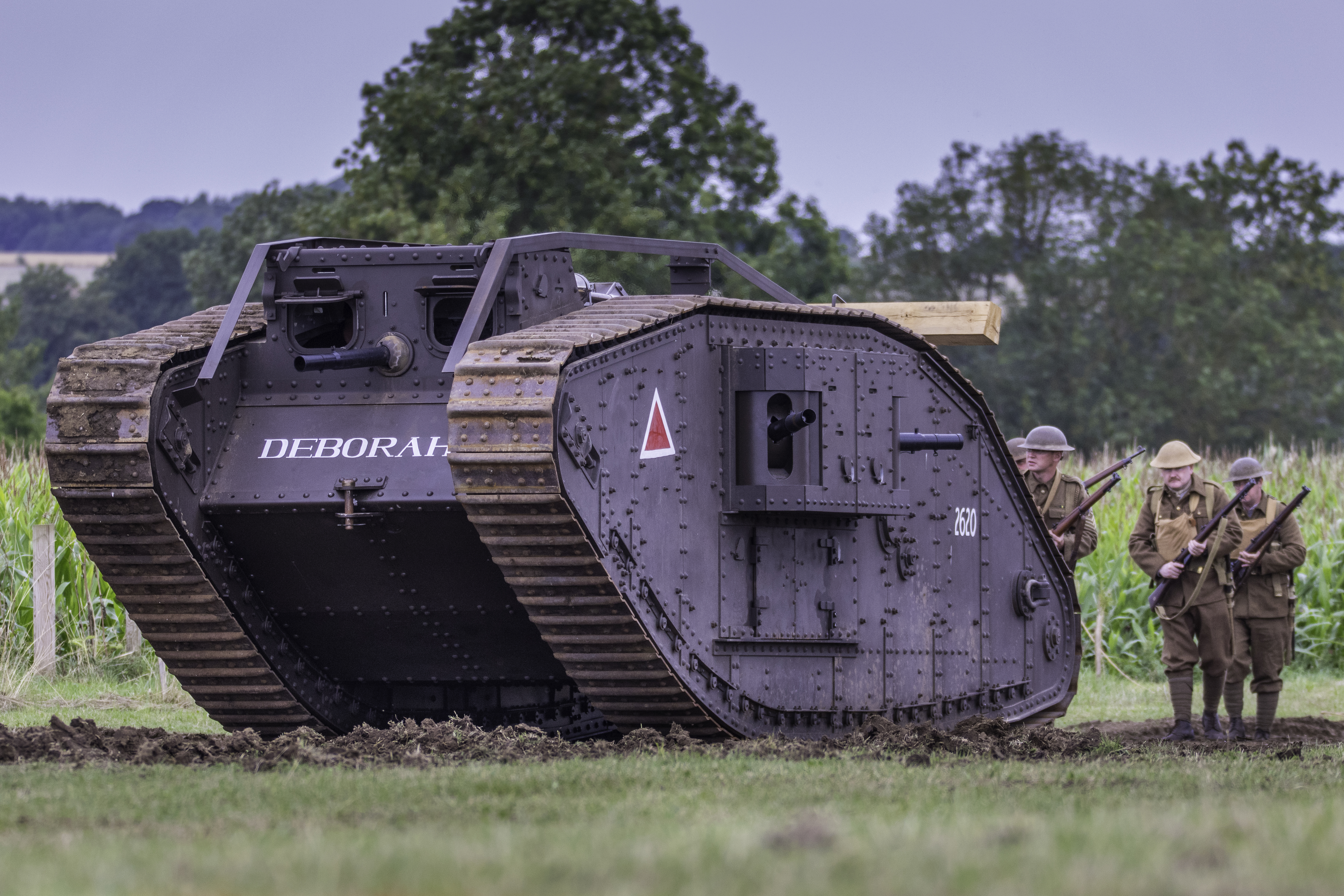Martini-Henry .577/450

Martini-Henry .577/450
The Martini-Henry was a breech-loading, single-shot, lever-actuated rifle adopted by the British Army, combining the dropping-block action first developed by Henry O. Peabody (in his Peabody rifle) and improved by the Swiss designer Friedrich von Martini, whose work in bringing the cocking and striker mechanism all within the receiver greatly improved the operation of the rifle, this new mechanism was then combined with the polygonal barrel rifling designed by Scotsman Alexander Henry. It first entered service in 1871 and in its various incarnations was used throughout the British Empire for 30 years.
The Martini-Henry was the first rifle designed from the outset as a breech-loader and was both easier to use and had a longer range than any of its predecessors.
The Mk.IV was the last variant to be produced ending production in 1889 but it remained in service throughout the British Empire until the end of WW1 and as late as 2011 was found in several Taliban arms caches in Afghanistan.

(From Left to Right): A .577 Snider cartridge, a Zulu War-era rolled brass foil .577/450 Martini-Henry Cartridge, a later drawn brass .577/450 Martini-Henry cartridge, and a .303 British Mk VII SAA Ball cartridge.
In their original chambering, the rifles fired a round-nosed, tapered-head .458-inch, soft hollow-based lead bullet, wrapped in a waxed paper patch giving a wider diameter of .460-inch; it weighed 485 grains. It was crimped in place with two cannulas (grooves on the outside neck of the case), ahead of concave felt and glazed card wadding. This sat on top of the main powder charge inside a rimmed brass foil cartridge, known today as the .577/450, a bottle-neck design with the same base as the .577 cartridge of the Snider-Enfield. It was charged with 85 grains (5.51 g) of Curtis and Harvey’s No.6 coarse black powder, notorious for its heavy recoil. The cartridge case was ejected to the rear when the lever was operated.
The rifle was 49 inches (124.5 cm) long, the steel barrel 33.22 inches (84 cm). The Henry patent rifling produced a heptagonal barrel with seven grooves with one turn in 22 inches (560 mm). The weapon weighed 8 pounds 7 ounces (3.83 kg). A sword bayonet was standard issue for non-commissioned officers; when fitted, the weapon extended to 68 inches (172.7 cm) and weight increased to 10 pounds 4 ounces (4.65 kg). The standard bayonet was a socket-type spike, either converted from the older Pattern 1853 (overall length 20.4 inches) or newly produced as the Pattern 1876 (overall length 25 inches).











